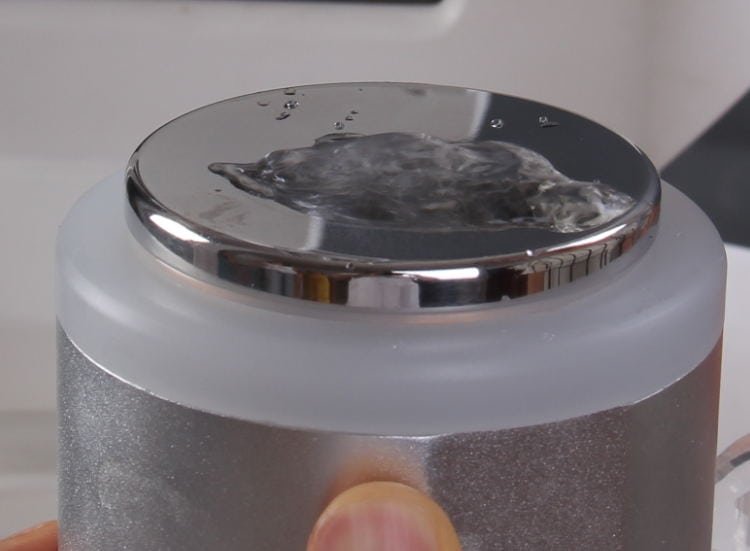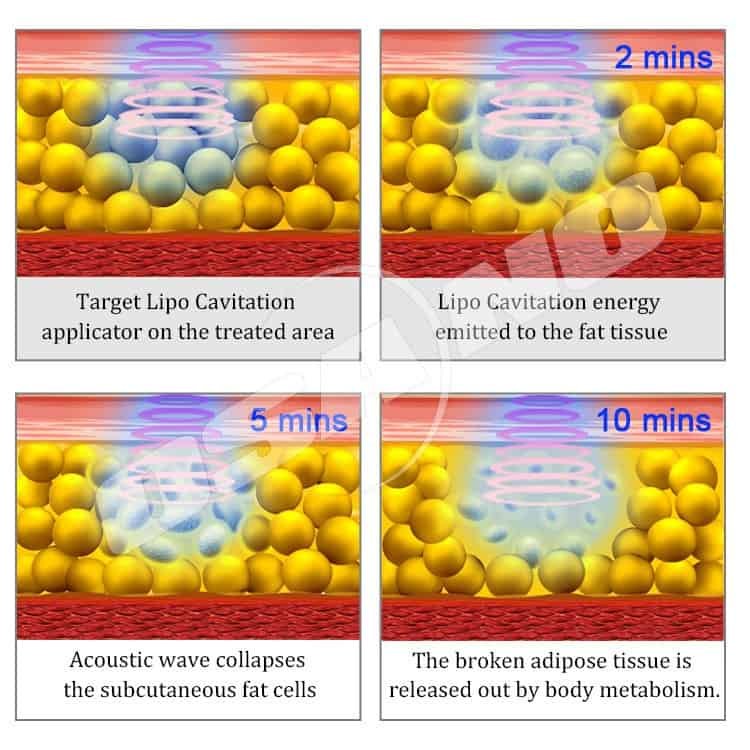Here’s a detailed explanation of Lipo Cavitation:
How Does Lipo Cavitation Work?
Lipo Cavitation uses ultrasound technology to create high-frequency sound waves that generate small bubbles in the fat cells beneath the skin. These bubbles implode and cause the fat cells to break down. The process is known as cavitation.
The fat that is released from the broken cells is then processed by the body’s lymphatic system, which is responsible for eliminating waste and toxins. As a result, the fat is naturally flushed out of the body through the urine and other metabolic processes.
The procedure targets localized fat deposits, making it a popular treatment for areas such as:
Abdomen
Thighs
Hips
Flanks (love handles)
Upper arms
Buttocks
Unlike traditional liposuction, Lipo Cavitation doesn't involve any cuts or needles and has no downtime, making it a more accessible and less invasive option for body contouring.
The Benefits of Lipo Cavitation:
Non-Invasive: Lipo Cavitation is a non-surgical procedure, meaning there's no need for anesthesia, incisions, or recovery time. It’s a pain-free alternative to liposuction.
Fat Reduction: The primary benefit of Lipo Cavitation is the reduction of localized fat in target areas. It works best for small to moderate fat deposits and can help contour the body.
Cellulite Reduction: Many patients report improvement in the appearance of cellulite after a series of treatments. The process helps to improve skin texture by tightening and firming the treated areas.
No Downtime: Because it's non-invasive, you can return to normal activities immediately after treatment.
Safe: Lipo Cavitation is considered a safe procedure when performed by a licensed professional. It's FDA-approved for fat reduction, and studies have shown its effectiveness.
Improved Skin Tone and Tightening: The process may also improve skin tone and elasticity due to the increased blood circulation and collagen stimulation that results from the treatment.
What to Expect During a Lipo Cavitation Session:
Consultation: Before starting the procedure, a professional will assess your health and target areas to determine if Lipo Cavitation is right for you. It's important to have a healthy diet and exercise routine to maximize the results of the treatment.
Preparation: You’ll typically be asked to drink plenty of water before the session. Hydration helps flush out the fat that’s broken down during the treatment.
Procedure:
During the procedure, a conductive gel is applied to the target area to help the ultrasound waves penetrate the skin.
A handheld device (ultrasound probe) is moved over the area. You may feel a slight warmth or tingling sensation, but the treatment is generally painless.
The session typically lasts between 20-40 minutes, depending on the size of the area being treated.
Post-Treatment Care: After the treatment, you can immediately resume normal activities. It's recommended to drink lots of water and engage in light physical activity (such as walking) to help the body flush out the broken-down fat.
Results: Results are not instant and may take time to show. Typically, the body starts to process and eliminate the fat within 24-72 hours. Visible results are often seen after 2-3 sessions, with optimal results occurring after 6-12 sessions, depending on the area and individual response.
How Many Sessions Are Needed?
Number of Sessions: Most clients see noticeable results after 2–3 sessions, but a typical treatment plan consists of 6–12 sessions, depending on the amount of fat to be reduced and the area being treated.
Frequency: Sessions are generally spaced 1-2 weeks apart to allow the body to process and eliminate the fat.
Maintenance: After the initial series of treatments, some people choose to have maintenance sessions every few months to keep the results.
Who Is a Good Candidate for Lipo Cavitation?
Lipo Cavitation is best suited for individuals who:
Have small to moderate amounts of stubborn fat that doesn’t respond well to diet and exercise.
Are in generally good health and have a healthy lifestyle (including proper diet and exercise).
Have localized fat deposits that they want to target, such as love handles, tummy, or thighs.
Are looking for a non-invasive alternative to traditional liposuction.
It is not a weight-loss solution, and it is most effective for individuals who are close to their ideal weight but want to contour specific areas of their body.
Not recommended for:
Pregnant women or breastfeeding mothers
Individuals with pacemakers or any metal implants
Those with severe liver or kidney disease
People with blood clotting disorders or cancer
Lipo Cavitation vs. Traditional Liposuction:
FeatureLipo CavitationTraditional LiposuctionInvasivenessNon-invasive (no surgery, no needles)Invasive (requires surgery and anesthesia)DowntimeNone (can resume activities immediately)Several days to weeks for recoveryResultsGradual, over multiple sessionsImmediate and more dramatic resultsRiskMinimal (temporary redness, soreness)Higher risk (infection, scarring, anesthesia complications)CostMore affordableMore expensive due to surgical costsIdeal CandidatePeople with small to moderate fat depositsPeople seeking significant fat removalFat Removal MethodBreaks down fat cells with ultrasound wavesRemoves fat surgically from the body
Conclusion:
Lipo Cavitation is an appealing option for those who want to reduce stubborn fat and contour their body without undergoing invasive surgery. It's ideal for individuals looking for a non-invasive, relatively low-risk treatment for localized fat loss and body sculpting. However, to achieve the best results, it is important to combine the treatment with a healthy diet and regular exercise.
If you’re considering Lipo Cavitation, make sure to consult with a licensed practitioner to determine if it’s the right treatment for your body goals.





